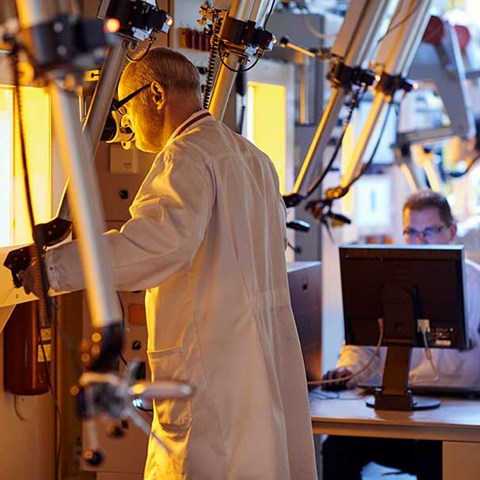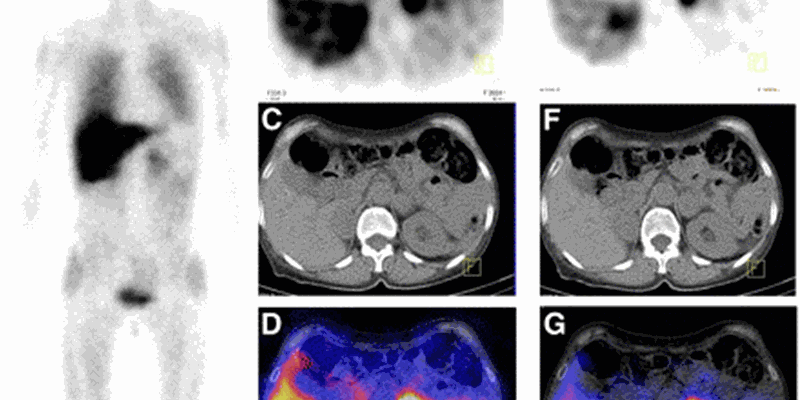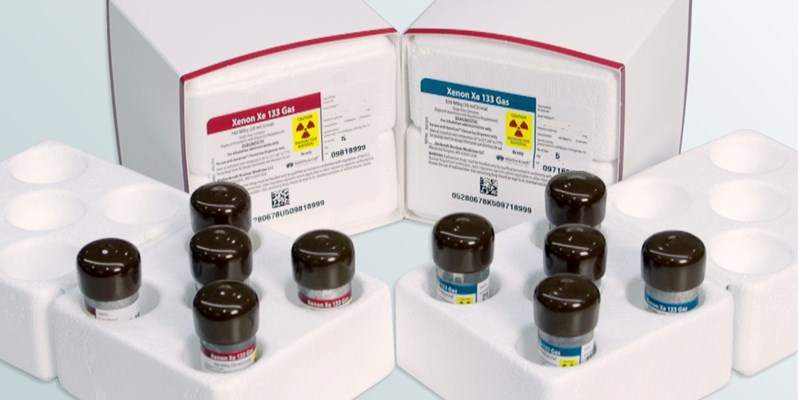Productionprocess xenon-133
Complex Xe-133 project completed
21 July 2020
Of a new production process
Based production
Joint development within business partnership
A complex project has been brought to a successful conclusion: the development and installation of a production process for xenon-133 gas. This project enabled NRG and Curium to produce and distribute another medical isotope, xenon-133, that has an important role in fighting several deadly diseases.
NRG & Curium join forces
The source material to produce xenon-133 was available. However, an efficient production process that would meet all the legal requirements and the quality assurance of the end product had yet to be developed.
NRG and Curium joined forces to explore the possibilities in setting up a flawless production route to extract xenon-133 from the waste gasses of the existing molybdenum production process in Petten. Curium's molybdenum production process takes place in NRG facilities, under NRG's Nuclear Energy Act permit. This was the starting point of a fruitful collaboration.
A gas tight containment, a so called glovebox, had to be added to the installation. This glovebox was specifically designed and constructed for this application, equipped with a specific and custom-built filtering system. This enabled the extraction of xenon-133 from the gas stream originating from the molybdenum production process.

Low Enriched Uranium (LEU) based
After significant R&D efforts, it was possible to safely capture radioactive xenon gas from the molybdenum process and to make the gas available with the required purity and specifications. An extra advantage of Curium’s xenon-133 gas is that it is LEU based, in line with the commitment that both the Dutch government and Curium have confirmed at the 2014 Nuclear Security Summit to phase out High Enriched Uranium based medical isotopes.

Xenon-133 (Xe-133)
The source material to produce xenon-133 was available. However, an efficient production process that would meet all the legal requirements and the quality assurance of the end product had yet to be developed.
NRG and Curium joined forces to explore the possibilities in setting up a flawless production route to extract xenon-133 from the waste gasses of the existing molybdenum production process in Petten. Curium's molybdenum production process takes place in NRG facilities, under NRG's Nuclear Energy Act permit. This was the starting point of a fruitful collaboration.
A gas tight containment, a so called glovebox, had to be added to the installation. This glovebox was specifically designed and constructed for this application, equipped with a specific and custom-built filtering system. This enabled the extraction of xenon-133 from the gas stream originating from the molybdenum production process.
Supply
Supply to the United States
The source material to produce xenon-133 was available. However, an efficient production process that would meet all the legal requirements and the quality assurance of the end product had yet to be developed.
NRG and Curium joined forces to explore the possibilities in setting up a flawless production route to extract xenon-133 from the waste gasses of the existing molybdenum production process in Petten. Curium's molybdenum production process takes place in NRG facilities, under NRG's Nuclear Energy Act permit. This was the starting point of a fruitful collaboration.
A gas tight containment, a so called glovebox, had to be added to the installation. This glovebox was specifically designed and constructed for this application, equipped with a specific and custom-built filtering system. This enabled the extraction of xenon-133 from the gas stream originating from the molybdenum production process.
Permit change
In order to be able to supply this new product, a change to the Nuclear Energy Act permit was necessary. This new permit was approved by the ANVS, the Dutch Authority for Nuclear Safety and Radiation Protection. As a result, production can take place in line with all safety requirements and regulations.

“We are pleased to provide our customers with a LEU based choice when selecting xenon-133 gas to help diagnose patient disease for approved indications,” said Curium CEO North America, Dan Brague.
More information?

Please contact
Frodo Klaasen
Business Manager
T. +31 224 56 4131
M. klaassen@nrg.eu



